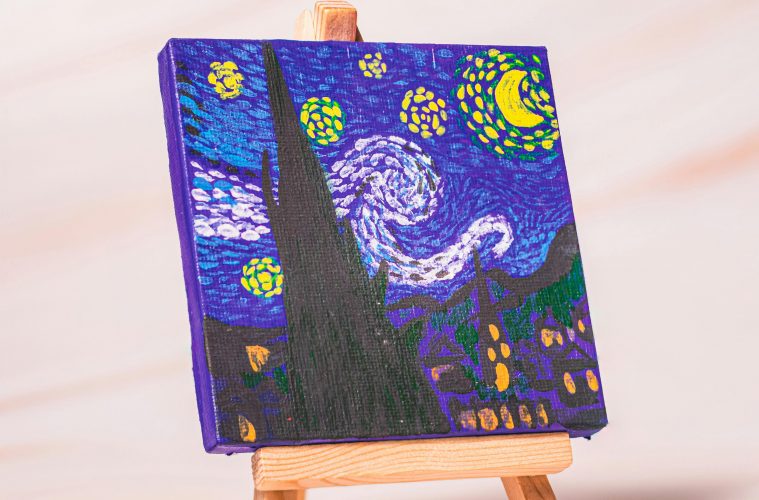Mini-artwork—petite portraits, little landscapes, tiny ceramics, and small-scale prints—are stealing the spotlight in the world of interior design, adding a sparkle of charm and personality to walls in spaces big and small.
Mini artwork, what started as a niche movement among independent artists, has mushroomed into a popular interior design trend. They are ideal for filling awkward nooks (those overlooked crannies and narrow walls that larger art can’t tackle) and elevating spaces throughout the home, proving that less can indeed be more.
Here’s why mini-artwork is trending and how you can adapt it to your own space.
Read more: Stylish and creative ways to showcase art in your home décor
Why mini-artwork is taking over in 2025
The appeal of mini-artwork lies in its ability to make a big impact without overwhelming a room or space. Maximalists love mini artworks for layering into busy spaces, while minimalists use them to add a subtle pop without cluttering things up.
Then there’s the practicality. Mini-artwork fits where bigger stuff can’t—like narrow walls, tight corners, or gaps above furniture. It’s a fix for spaces that usually get ignored, turning ‘dead zones’ into something eye-catching.
The variety helps, too. Artists are producing all kinds of minis—petite landscapes, small ceramic tiles, and tiny prints. These smaller artworks are often more affordable than their larger counterparts, which makes owning an original piece of art affordable when you don’t have thousands to spend on a bigger work.
Not all mini artworks need to be handmade, either. It’s about how you use a piece of media or material – think of travel souvenirs like tiny postcards that you can tuck into a suitcase and frame at a later stage. The mix keeps it fresh and personal.
How to decorate with mini artwork: Tips for your space
Ready to jump on the mini-art bandwagon? Here are some expert-inspired ideas to make it work in your home:
Go frame-free for a casual feel
Skip the frame and let vintage finds (or your own works of art) shine on their own. Prop a small oil-on-canvas piece against a wall on a dresser or side table for an effortless, budget-friendly look. This approach brings a plain furniture surface to life and adds a pop of colour without the fuss (or cost) of framing.
Level up your mantelpiece
The mantel is a great space to play around with mini-art. Lean tiny canvases, tiles, or ceramics against the wall to create a curated vignette. Pairs small pieces with a larger framed piece – small art can complement—not compete with—bolder works. Keep it petite to let the bigger elements shine.
Fill awkward gaps with personality
Got a quirky corner or a sliver of wall space? Try placing tiny nature prints or ceramics above a kitchen hood, above furniture (lounge suite, cabinets, etc) to add a bit of spark to the space. Layering works best for these spaces.
Opt for a tiny above the bed
Large art above the bed isn’t for everyone—and so tiny art is the solution. We love very tiny pieces over headboards. It’s a safer, lighter option that keeps the bedroom feeling airy and unique. Not into art? Look at tiny mirrors, ceramics, etc.
Mix it into a gallery wall
Tiny art doesn’t have to stand alone, in fact, it shouldn’t. Blend small pieces—like plates or prints—into a larger gallery wall for an eclectic, timeless look.
Aim high for visual interest
Draw the eye upward by propping or hanging mini-artwork in high spots. It’s a smart move for collectors running out of traditional display space.
Try box frames
Box frames give mini-art a freestanding edge and allow you to group mini-items together for one larger, collage-type piece. Place them on shelves or tables and shuffle them around to keep things interesting.
ALSO SEE: THE TIMELESS BEAUTY OF CERAMICS IN YOUR HOME
Feature image: Pexels


